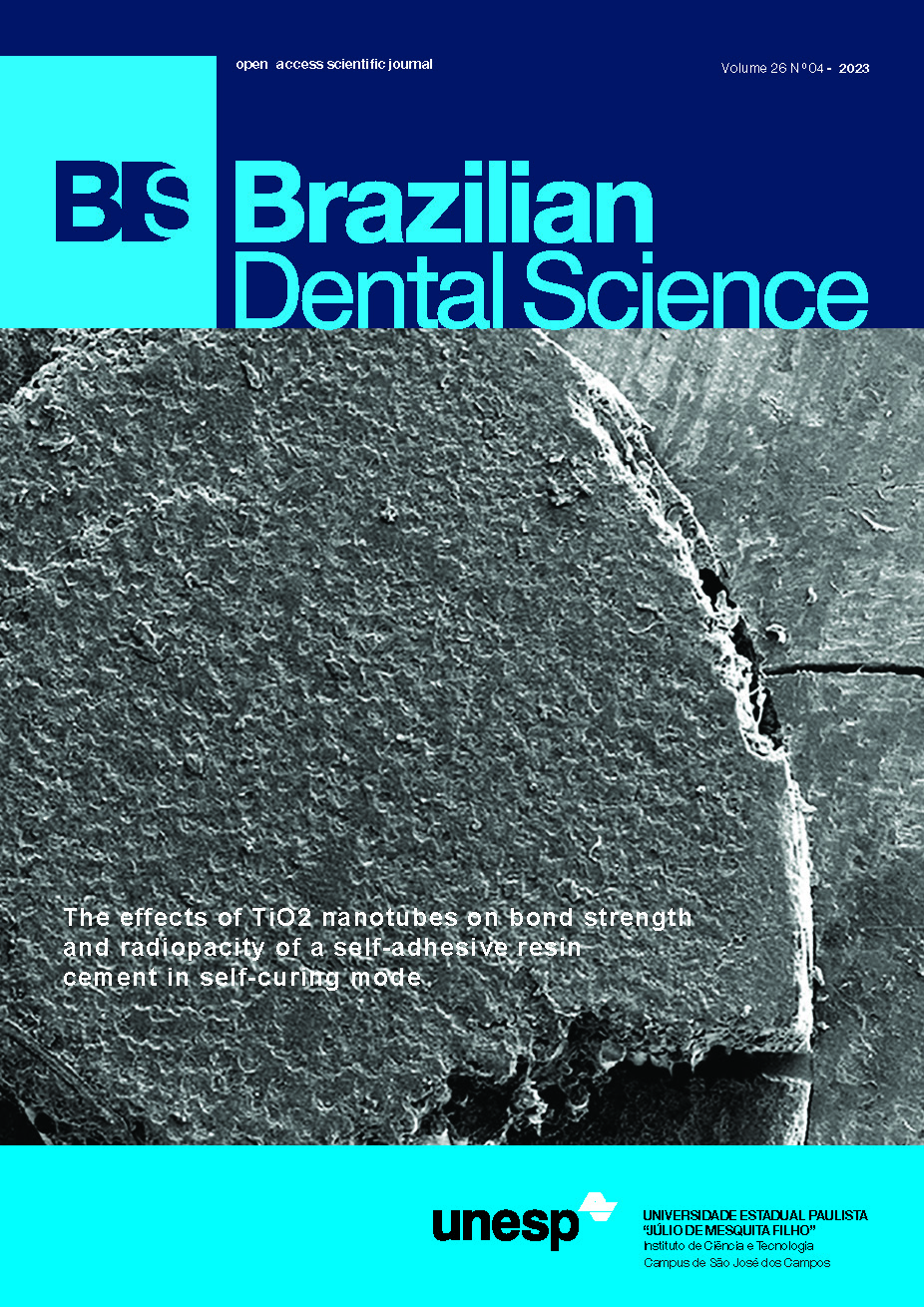Development of a cell phone application as an auxiliary teaching tool for the subject of complete dentures
DOI:
https://doi.org/10.4322/bds.2023.e4012Abstract
Objective: The study aimed to develop a cell phone application entitled: “Total Prosthesis Manual – Rehabilitating smiles”, as an auxiliary teaching tool for teachers and students through digital technology, with a smartphone. Material and Methods: The tool was structured on the “Application Factory website”, which allows the creation of mobile applications in different formats, with broad and interactive features on IOS and Android platforms. The expository format of the content is in slide format, containing descriptive theory and images about the stages of making a complete prosthesis; from necessary materials, photos and descriptive guidance of the steps. Results: The application is a complementary teaching resource to assist undergraduate and postgraduate students and professionals working in the area of complete prosthetics. The theoretical and practical content selected for the application covered all stages of understanding, development and possible complications associated with the manufacture of a complete bimaxillary prosthesis, from planning, impressions, models, orientation plans, tooth assembly, adaptations and delivery. Conclusion: The application provided a low-cost, expandable and easy-to-use teaching resource for teaching complete dentures. It is essential to develop various analyzes such as user experience tests, application effectiveness, development of new technologies and improvement of techniques, so that their potential for enriching learning in complete dentures and dentistry in general can be verified.
KEYWORDS
Complete denture; Dental education; Educational technology; Learning; Mobile applications.
Downloads
Published
How to Cite
Issue
Section
License
Brazilian Dental Science uses the Creative Commons (CC-BY 4.0) license, thus preserving the integrity of articles in an open access environment. The journal allows the author to retain publishing rights without restrictions.
=================




























